BUENOS AIRES: More than just tango, soccer and dulce de leche
They say Buenos Aires is the bastard child of Paris and La Habana, and for good reason. The city itself is a blasting mix of electric colors on one side and grey sobriety on the other. There’s something enchanting about both sides, though, and everywhere you look you can be sure to always find something new, for the city is constantly renewing itself. From colorful, soccer-obsessed La Boca to European-chic Recoleta, there truly is a ‘barrio’ for everyone.
It’s hard to pinpoint only a few places in a city so big because there are so many options. Over 3 million people call Buenos Aires their home, so it’s mandatory to visit a few of the essentials to properly understand its charm. Just remember that here in the southern hemisphere, summer begins in December, so make sure to plan ahead and visit the city around this time: you’ll get warm weather, sunny days and beautiful flowers all around the place. The argentine culture is defined by three things: drinking mate with the locals in the afternoon, having a glass of wine while enjoying a good steak, or going to a local soccer match. But there’s so much more to Buenos Aires and so many interesting things to do, there’s always something for everybody.
CAMINITO
Caminito is a tiny street (it’s only 2 blocks) located in La Boca neighborhood, the old port of Buenos Aires, home to the world-famous soccer team Boca Juniors. The street itself is different from anything else you’ve ever seen. The colors of the houses go from yellow to bright red and shiny blue. It really is like a carnival all year round. The story says it’s painted wildly because in the early 1900’s, the humble port inhabitants were given cans of paint from the arriving ships, which they used to paint the fronts of their houses. If you take a look, you can see they are mostly made of zinc, which is usually how low-class houses are built in Latin-America.
In Caminito, you can find tango dancers, Maradona imitators and Pope Francis pictures all around: it is about celebrating the argentine culture from its roots. On the weekends, there is an artisan fair where you can get curious souvenirs made by the local artists. The only downside is that it can get very crowded so it might be better to go on a weekday. Make sure to take a walk around the neighborhood to really get a taste of the argentine culture at its best, but don’t venture too far away from crowds, because La Boca is known to be a little bit dangerous, especially for tourists.
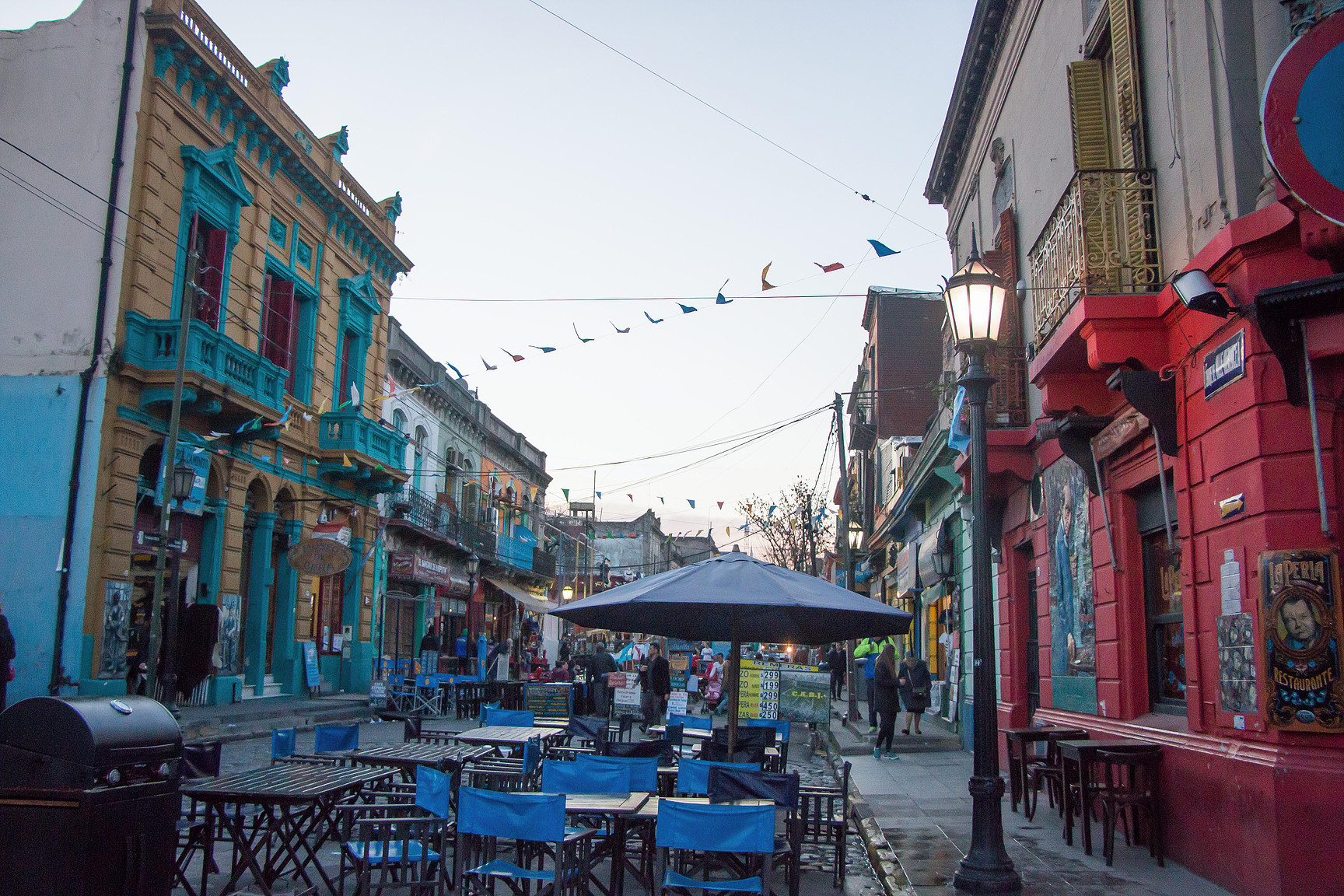
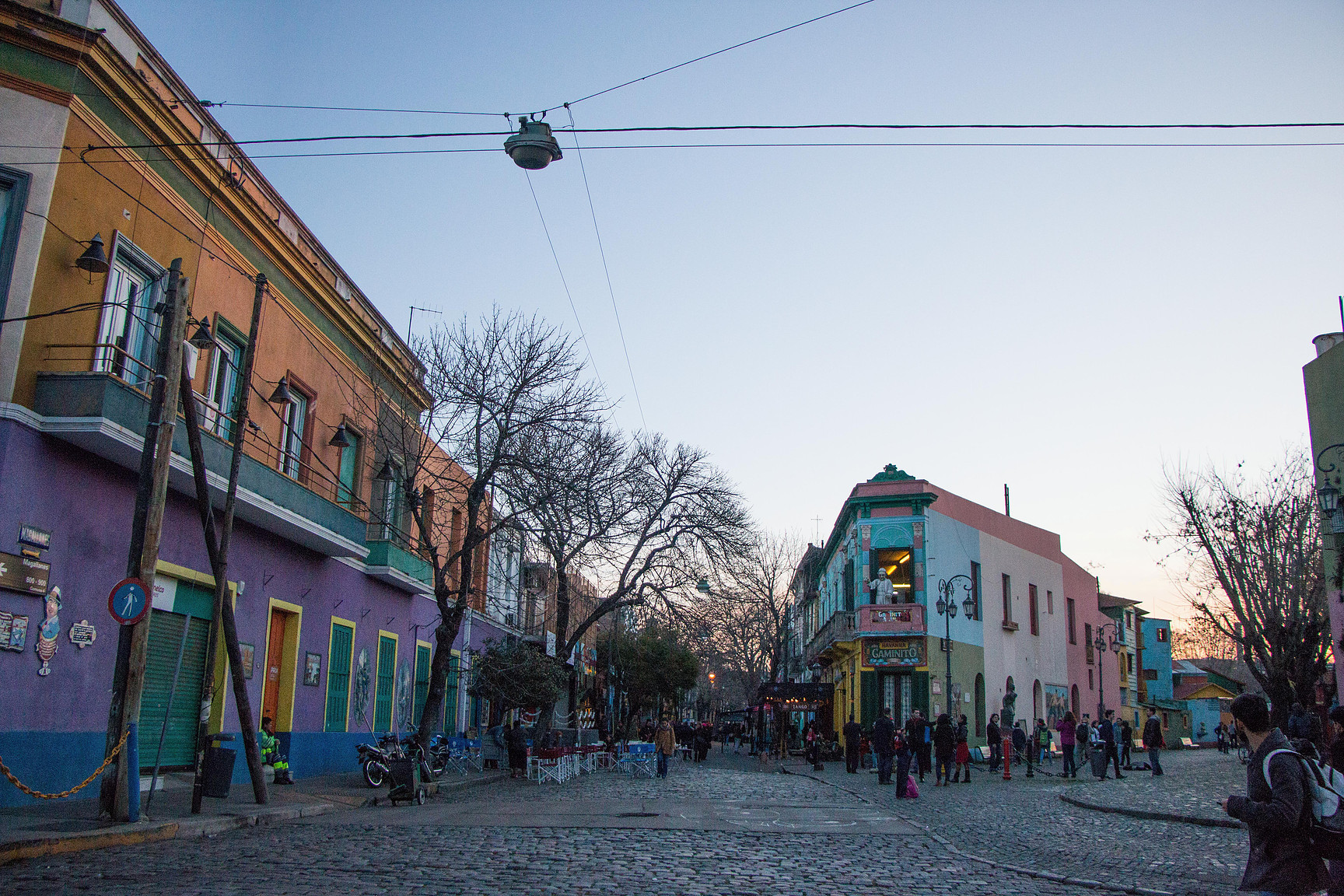
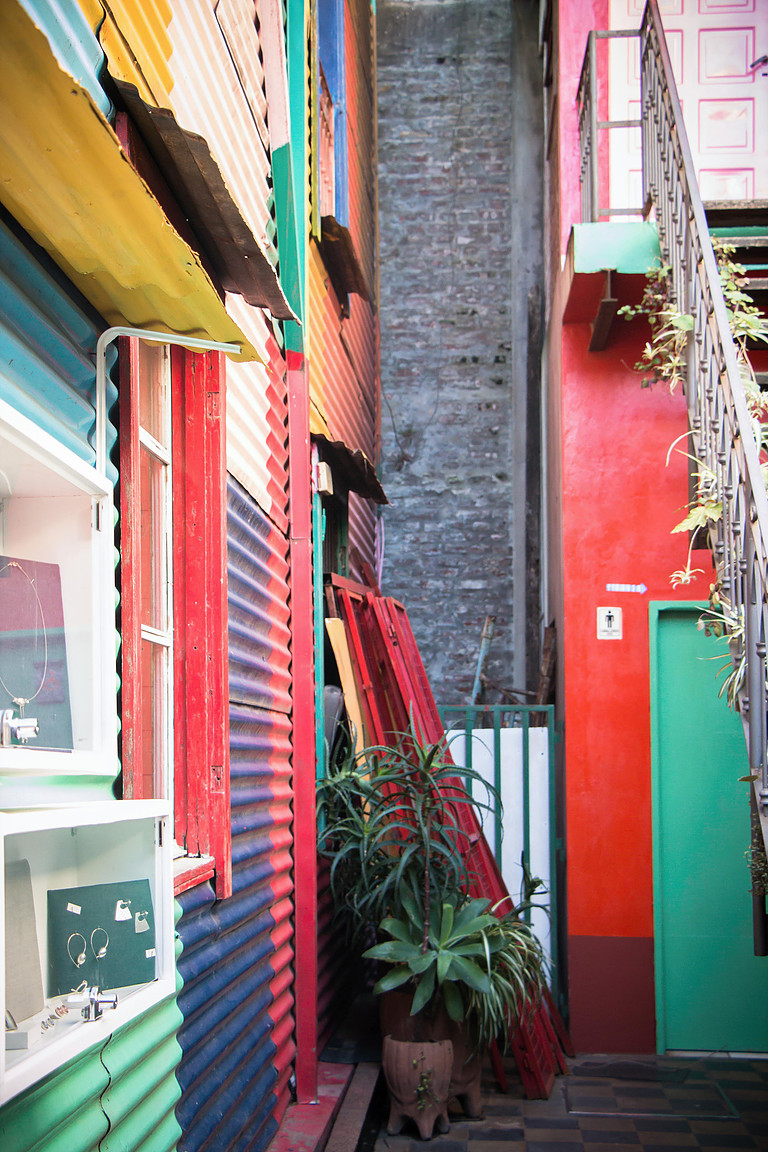
PALERMO SOHO
Palermo Soho is Buenos Aires’ trendy hotspot. It stole its name from the very fashionable and famously chic area in London (and also New York), and if you take a walk around the streets of Palermo Soho, you can understand why: you don’t even have to enter any shop to see that art is in the air, on the walls, and even painted on the floor. It’s so trendy that even world-famous street artists choose these streets to paint their murals.
Most of the high-end argentine fashion brands have their base location right here; Maria Cher, Kosiuko and Jazmin Chebar have their carefully styled boutiques for the fashion-savvy public to enjoy, because their philosophy is to sell the whole experience, not just the clothes. But besides art and apparel, Palermo Soho is famous for its ample variety of restaurants and cafés. These coffee shops go beyond the typical because they are carefully assembled to be unique: their decor is on point, their personnel is very attentive, they propose a lifestyle, and most importantly, they serve as casual hangout or work spots, very New-York style. Its a very argentine thing to go sit at a coffee shop with your laptop or work buddy, stay there for hours and just get a cup of coffee or the famous medialunas (sweet mini croissants with a syrup coating on top). You can’t really go wrong with anything you order, for sweet treats are an argentine specialty, but if you get the chance, we do recommend you get some kind of medialuna, alfajor (the argentine version of the macaron) and something with dulce de leche (sweet, creamy caramel made with milk and sugar).
The top cafés and bakeries to try in Palermo Soho: Café Felicidad, Pani, La Panera Rosa, Ninina Bakery, Farinelli. They are all within a few blocks between each other.
Palermo Soho is also home to the best burgers in town, a trend that seems to be expanding within the argentine public. Burger Joint was the first one to open its doors, and it’s still extremely popular with both tourists and locals. Their burgers made with 100% argentine meat are deliciously decadent, and the decoration of the place is pure magic. There are other famous burger places that offer really good food too. It really gets hard to choose which one is the best, so you better try them all and see for yourself. Dean & Denny’s, The Burger Co, Perez H, Heisenburger definitely deserve a spot on the Top 5 ranking.
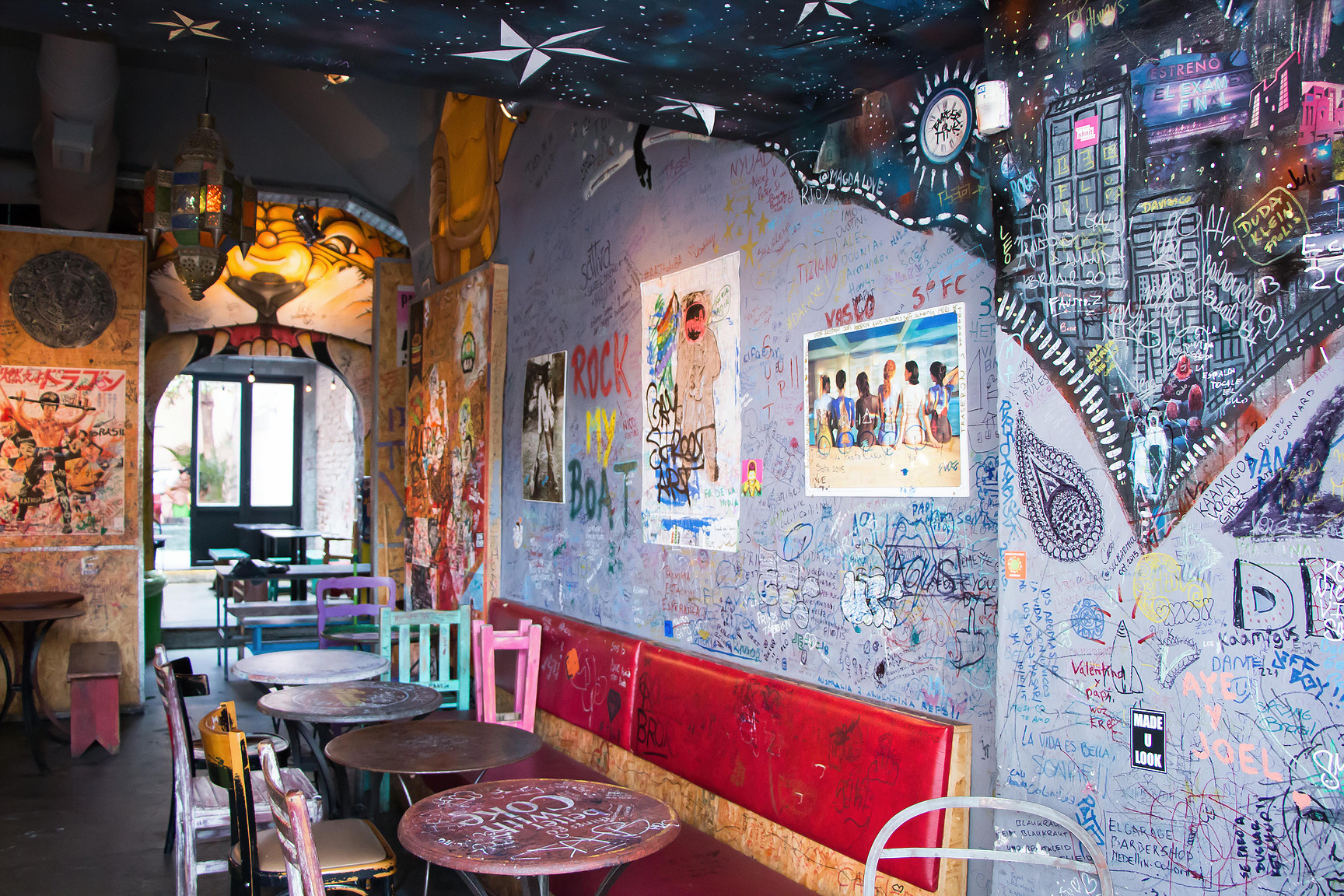
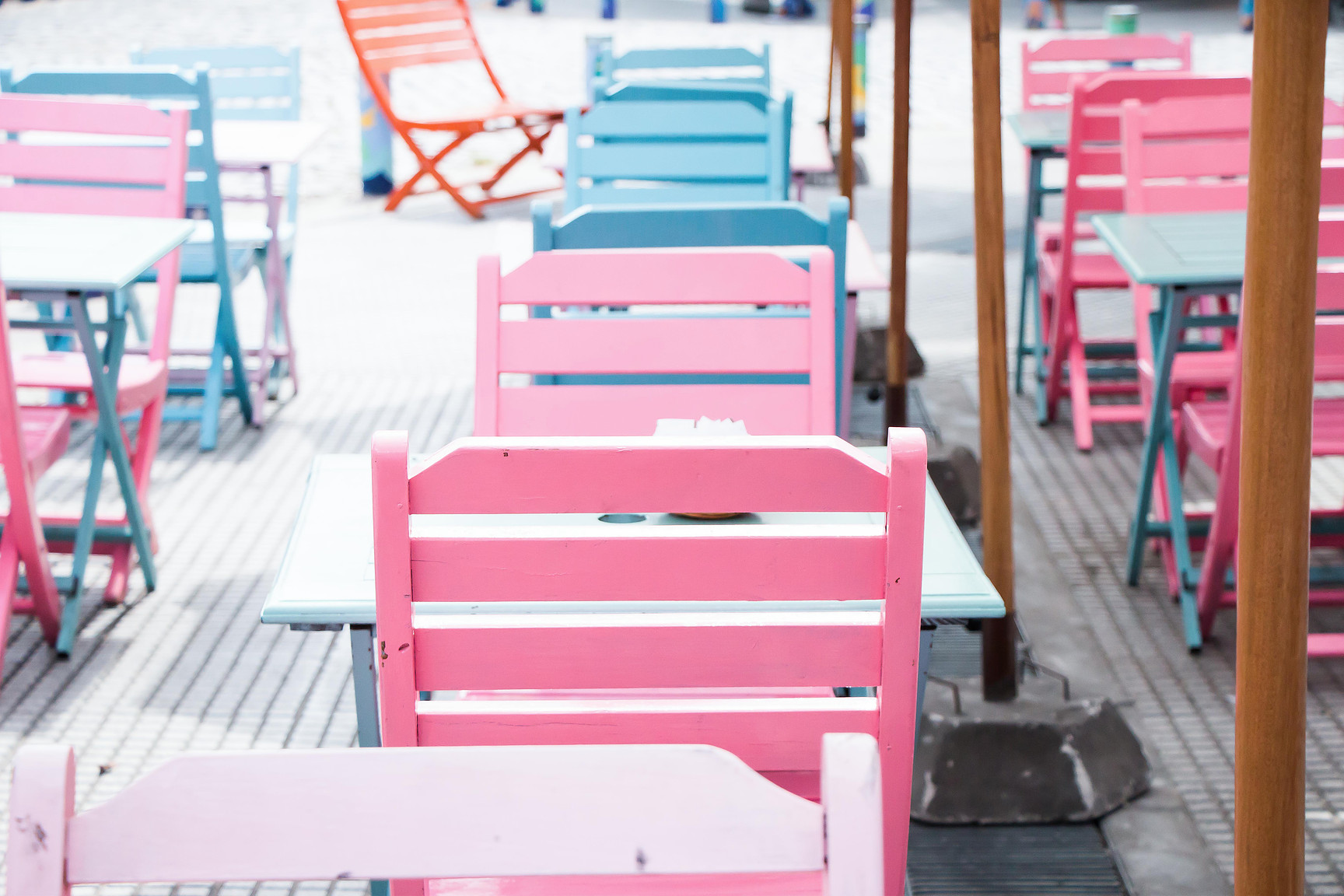
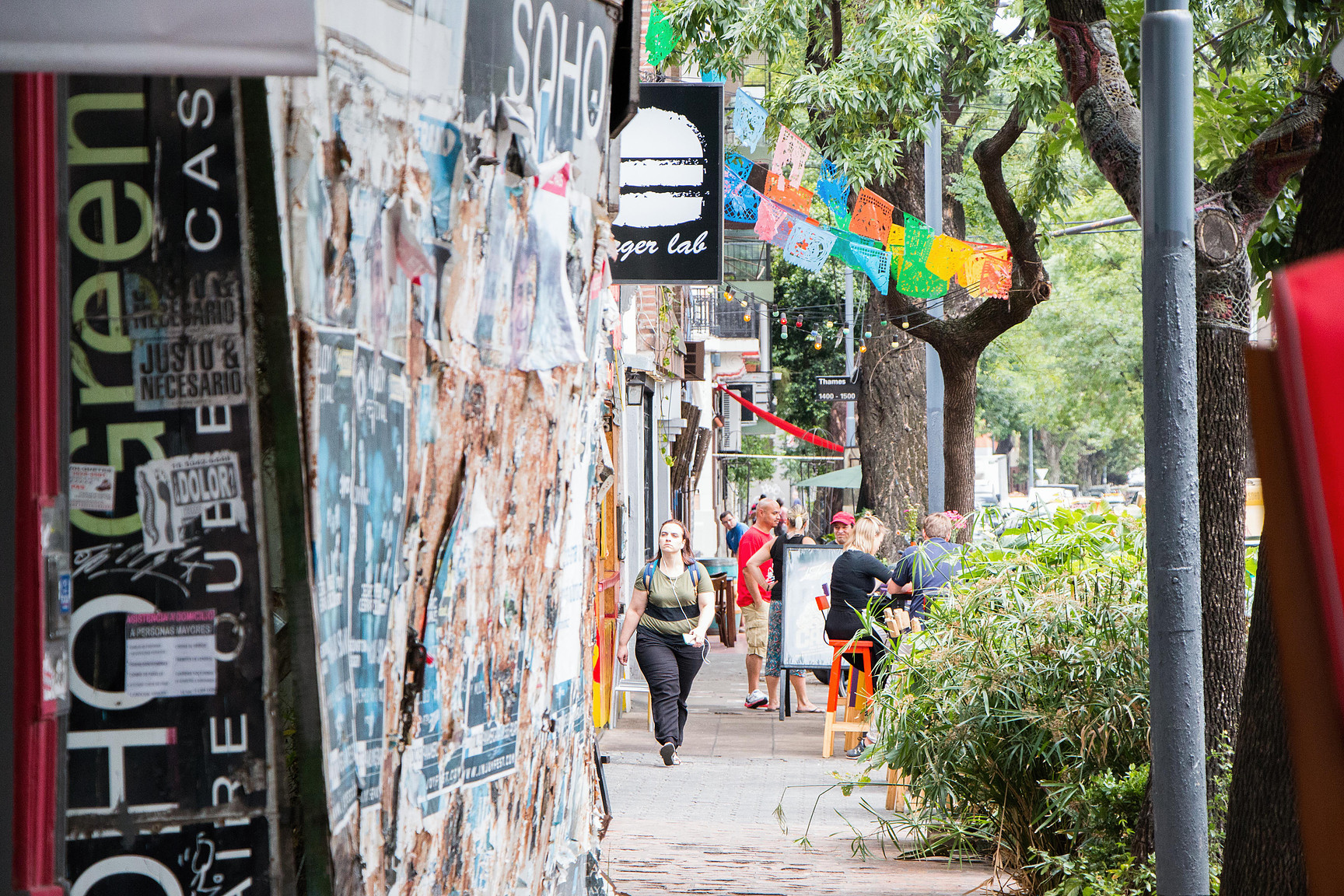
RECOLETA
If you want to imagine for a minute that you’re walking around the streets of Paris, come to Recoleta. Its European architecture is so distinct because the whole neighborhood was planned by parisian architects themselves. Recoleta is home to the most luxurious fashion brands in the world: Louis Vuitton, Gucci, Carolina Herrera, Armani, and also to the fanciest hotels in the city. Its most famous attraction is the Recoleta Cemetery, where you can find Evita Perón’s mausoleum surrounded by those of former rich and prominent families. The cemetery is located in the heart of Recoleta, inside of a very nice park, Plaza Francia, where the local artisans set up a fair on the weekends. It gets crowded because everyone wants to see Evita’s memorial. But the real beauty is not exactly here. Getting lost in the streets of Recoleta is a beautiful experience. You’ll find the most glamourous characters: most of them older ladies, with their fancy hair and fur coats walking their elegant dogs. Its streets are truly an old-fashioned runway where you can find French-style cafés like Le Pain Quotidien and Croque Madame, and buy Macarons at the famous chocolate boutique Vasalissa.
If you’re in for a bigger treat, make sure to visit the Park Hyatt’s Palacio Duhau. The famous hotel used to be a mansion owned by a very wealthy family, the Duhau’s, during the 1920’s. The building is inspired in the Château du Marais in Le Val-Saint Germain, hence it’s very parisian look and feel. Even if you’re not staying in one of the 11 original marble-floored suites, you can still access the restaurants, the tea room and the gardens. If the weather is nice, getting tea in the Palace gardens is one of the most delightful activities in the city: it’s a hidden oasis that not many people know. The whole tea service can be a little pricey, but it’s completely worth the splurge.
PUERTO MADERO
If Recoleta is the Paris of Buenos Aires, then Puerto Madero is definitely Brickell. It used to be an abandoned port which was later restored and turned into a boulevard. This boulevard is crossed by a large waterway and on top the famous Woman’s Bridge (Puente de la Mujer). When you cross to the other side and wander the streets of Puerto Madero, you find nice restaurants and cute coffee shops.
Since it’s the newest neighborhood in the city, everything is so modern that it contrasts with the rest of Buenos Aires. The streetwalks are wide, everything is clean and recently built, the buildings are tall, luxurious and spacious. Puerto Madero is especially nice in the summer since it tends to get very windy in the winter, and a great summer activity is to rent a bike and ride along the canal or the many parks.
There are also many museums and hotels that deserve a visit. The Fortabat Museum and the Faena Art Collection are definitely worth a visit. The Faena Universe Hotel is considered the most extravagant of Buenos Aires. It’s decorated with unicorns and funky red lights, and it main bar is actually like the inside of a library with a glass door that leads to the pool with a big golden crown right in the middle. Going for a drink at the Faena bar is a must when in Puerto Madero. Plus, if you’re a movie fan, you’ll recognize it from the Will Smith film, Focus, which was mostly filmed here in Buenos Aires.


